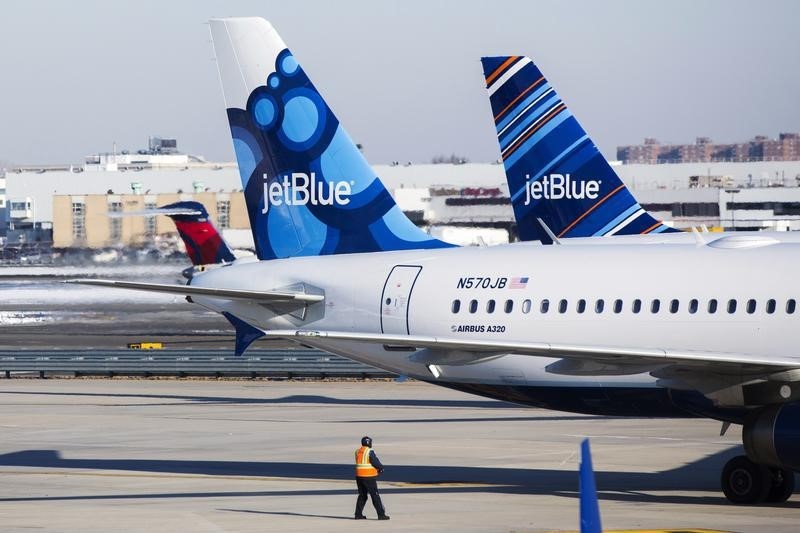JetBlue Airways (NASDAQ:JBLU) disclosed its first-quarter financial performance for 2024, revealing a narrower-than-expected loss per share but a decline in revenue, which sent the airline's stock tumbling by 6.9%. The company reported an adjusted net loss of $145 million, or -$0.43 per share, which was $0.09 better than the analysts' consensus of -$0.52 per share. However, operating revenue was down 5.1% year-over-year (YoY) to $2.2 billion, aligning with analysts' estimates.
The decrease in revenue and a 2.7% reduction in capacity YoY impacted the stock, alongside a somber revenue outlook for the second quarter and the full year. The company's chief executive officer, Joanna Geraghty, acknowledged the challenges faced due to elevated capacity in the Latin region, expecting it to continue pressuring revenue and leading to a setback in full-year expectations. Despite these headwinds, she expressed confidence in the airline's refocused standalone strategy to return to profitability.
The airline's operating expenses for the quarter increased by 14.0% YoY to $2.9 billion, with cost per available seat mile rising by 17.1%. However, when excluding special items, operating expenses decreased by 3.7% YoY to $2.4 billion. The average fuel price for the quarter was $2.97 per gallon.
Looking ahead, JetBlue anticipates revenue to be down between 10.5% and 6.5% in the second quarter, with full-year revenue expected to decrease by low single digits. Available Seat Miles (ASMs) are also projected to be down between 5.0% and 2.0% in the second quarter, with a similar decline for the full year.
JetBlue’s chief financial officer, Ursula Hurley, highlighted the company's focus on cost control, which resulted in beating their revised outlook range for the first quarter. She noted the importance of cost savings, especially with volatile fuel prices, and reiterated the airline's commitment to remaining agile in addressing industry challenges.
Investors reacted negatively to the airline's performance and outlook, with the stock experiencing a significant drop following the earnings release. The company's efforts to improve operational efficiency and cost management were overshadowed by the declining revenue and cautious outlook for the coming quarters.
